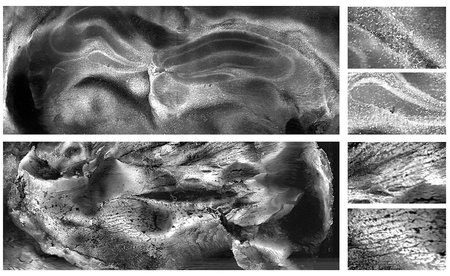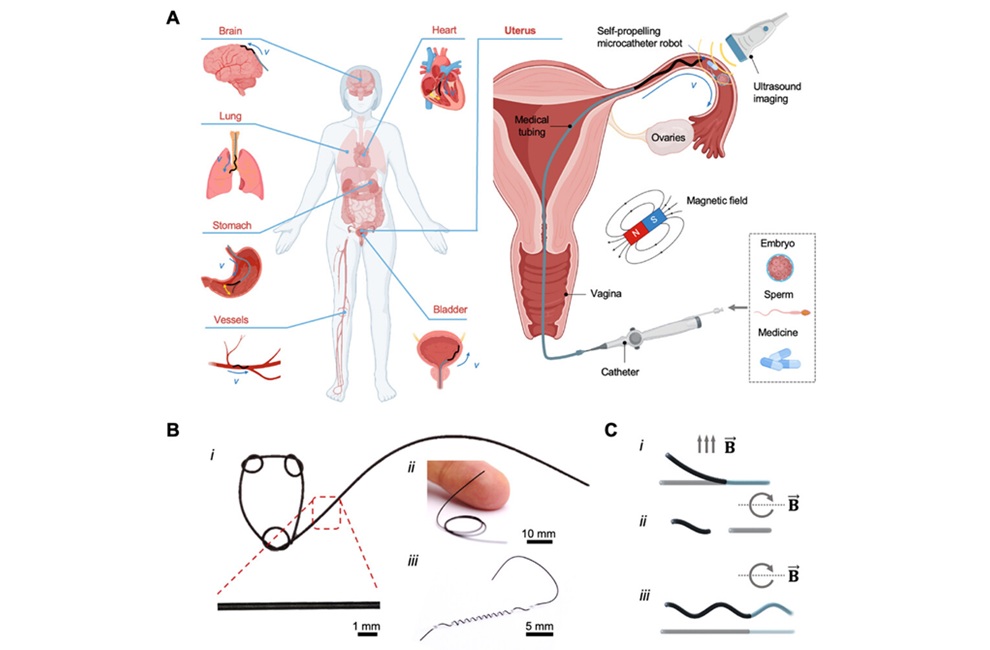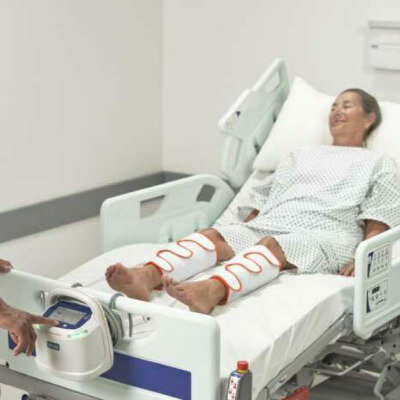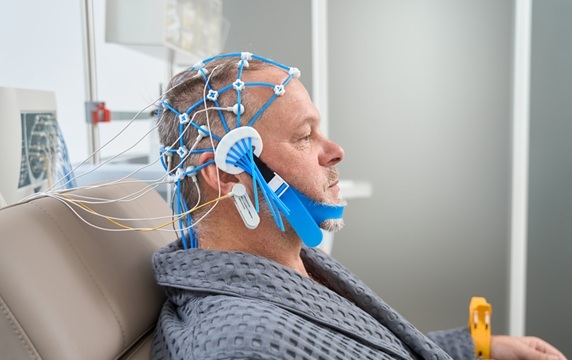New Microscopy Technique Enables Rapid Tumor Analysis by Surgeons in OR
|
By HospiMedica International staff writers Posted on 19 Dec 2024 |

The current standard method for quickly sampling and imaging tissue during surgery involves taking a biopsy, freezing the sample, staining it to enhance visibility, and slicing it into thin sections that are then mounted on glass slides. An optical microscope is then used to examine the tissue in detail. If tumor cells are found on the surface of the tissue sample, it indicates that the surgeon has cut through, rather than around, the tumor, leaving some of the tumor behind, which may require follow-up surgery to remove more tissue. However, frozen section pathology faces issues such as tissue artifacts and reduced staining quality, which can affect diagnostic accuracy and surgical decisions. A new imaging technology now offers a faster and more cost-effective way for surgeons to image tissue samples during surgery to determine whether the entire tumor has been removed or if more tissue needs to be excised.
Bioengineers at the California Institute of Technology (Caltech, Pasadena, CA, USA) have introduced a new imaging technique called parallel ultraviolet photoacoustic microscopy (PUV–PAM), detailed in a study published in Science Advances. This method is based on photoacoustic microscopy (PAM), a technique that excites tissue samples with a low-energy laser, causing the tissue to vibrate. The system detects the ultrasonic waves emitted by the vibrating tissue. Since cell nuclei absorb more light than the surrounding material, PAM can reveal the size and distribution of nuclei and the packing density of cells. Cancerous tissue typically has larger nuclei and more densely packed cells. The research team has previously developed PAM systems for imaging bone and breast tissue, but to make these systems suitable for use in the operating room, they needed to overcome the limitations of the ultraviolet lasers used, which previously restricted the imaging speed.
To address this issue, the researchers divided a single laser beam into eight smaller, parallel laser "spots," allowing the system to cover the tissue sample more quickly. Additionally, PUV-PAM combines two scanning techniques to achieve faster imaging of slide-free tissues. These innovations make the technique approximately 40 times faster than the previous state-of-the-art methods developed by the team. The new PUV–PAM technique can eliminate the need to freeze, section, or stain tissue samples. Even thick samples with irregular surfaces, which are typically too thick for traditional microscopy, can be directly imaged. This method could enable oncologists to analyze biopsy samples during surgery, allowing them to remove additional tissue if necessary, potentially eliminating the need for follow-up surgeries.
"We hope this new imaging system can provide more opportunities for intraoperative pathological examination of slide-free specimens in oncology surgeries. We believe it has the potential to revolutionize intraoperative histology," says Rui Cao, lead author of the new paper. "With the current system, we can image a 1 cm2 sample at 1.3 micron resolution within about five minutes. And we demonstrate in the paper that this technique is effective in a variety of tissue types."
Latest Pathology News
Channels
Critical Care
view channel
Bioadhesive Strategy Prevents Fibrosis Around Device Implants on Peripheral Nerves
Peripheral nerves connect the brain and spinal cord to muscles, organs, and sensory systems, making them key targets for treating neurological and systemic diseases. However, implantable bioelectronic... Read more
Miniature Non-Invasive Robotic Catheters to Improve Infertility Treatments
Minimally invasive procedures in reproductive and gynaecological medicine are often limited by the difficulty of navigating narrow, delicate anatomical pathways without damaging surrounding tissue.... Read moreSurgical Techniques
view channel
Catheter-Based Procedures Offer Less Invasive Option for Treatment of Valvular Disease
Valvular heart disease, caused by tight or leaky valves between heart chambers, affects up to 10% of older adults and leads to more than 120,000 deaths globally each year. Traditional open-heart surgery... Read moreLaparoscopic Surgery Improves Outcomes for Severe Newborn Liver Disease
Biliary atresia is a rare but life-threatening liver condition in newborns that blocks bile flow and leads to progressive liver damage if not treated early. Surgery is typically performed within the first... Read morePatient Care
view channel
Revolutionary Automatic IV-Line Flushing Device to Enhance Infusion Care
More than 80% of in-hospital patients receive intravenous (IV) therapy. Every dose of IV medicine delivered in a small volume (<250 mL) infusion bag should be followed by subsequent flushing to ensure... Read more
VR Training Tool Combats Contamination of Portable Medical Equipment
Healthcare-associated infections (HAIs) impact one in every 31 patients, cause nearly 100,000 deaths each year, and cost USD 28.4 billion in direct medical expenses. Notably, up to 75% of these infections... Read more
Portable Biosensor Platform to Reduce Hospital-Acquired Infections
Approximately 4 million patients in the European Union acquire healthcare-associated infections (HAIs) or nosocomial infections each year, with around 37,000 deaths directly resulting from these infections,... Read moreFirst-Of-Its-Kind Portable Germicidal Light Technology Disinfects High-Touch Clinical Surfaces in Seconds
Reducing healthcare-acquired infections (HAIs) remains a pressing issue within global healthcare systems. In the United States alone, 1.7 million patients contract HAIs annually, leading to approximately... Read moreHealth IT
view channel
EMR-Based Tool Predicts Graft Failure After Kidney Transplant
Kidney transplantation offers patients with end-stage kidney disease longer survival and better quality of life than dialysis, yet graft failure remains a major challenge. Although a successful transplant... Read more
Printable Molecule-Selective Nanoparticles Enable Mass Production of Wearable Biosensors
The future of medicine is likely to focus on the personalization of healthcare—understanding exactly what an individual requires and delivering the appropriate combination of nutrients, metabolites, and... Read moreBusiness
view channel
Philips and Masimo Partner to Advance Patient Monitoring Measurement Technologies
Royal Philips (Amsterdam, Netherlands) and Masimo (Irvine, California, USA) have renewed their multi-year strategic collaboration, combining Philips’ expertise in patient monitoring with Masimo’s noninvasive... Read more
B. Braun Acquires Digital Microsurgery Company True Digital Surgery
The high-end microsurgery market in neurosurgery, spine, and ENT is undergoing a significant transformation. Traditional analog microscopes are giving way to digital exoscopes, which provide improved visualization,... Read more
CMEF 2025 to Promote Holistic and High-Quality Development of Medical and Health Industry
The 92nd China International Medical Equipment Fair (CMEF 2025) Autumn Exhibition is scheduled to be held from September 26 to 29 at the China Import and Export Fair Complex (Canton Fair Complex) in Guangzhou.... Read more
















